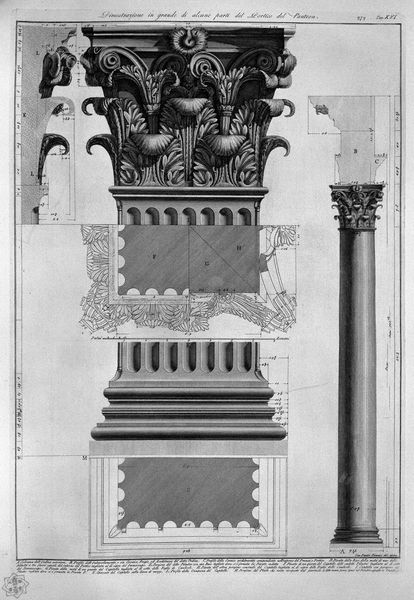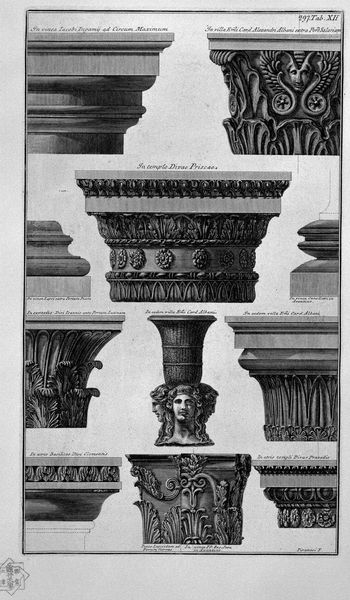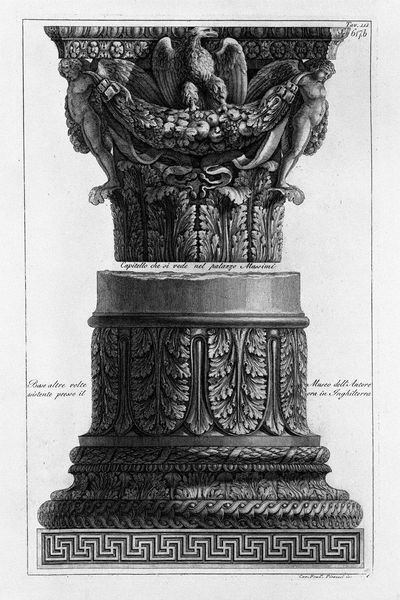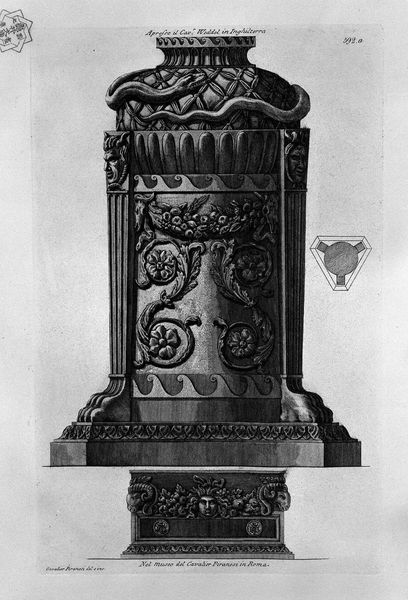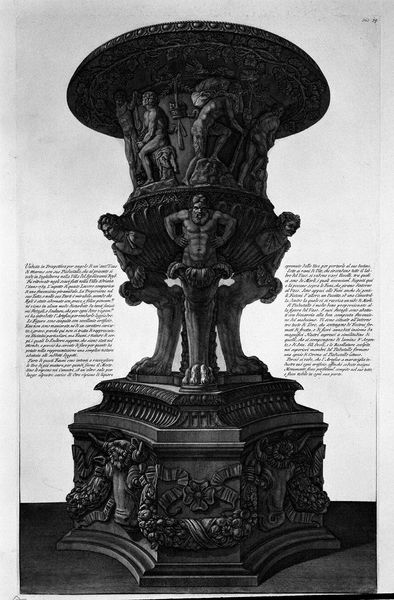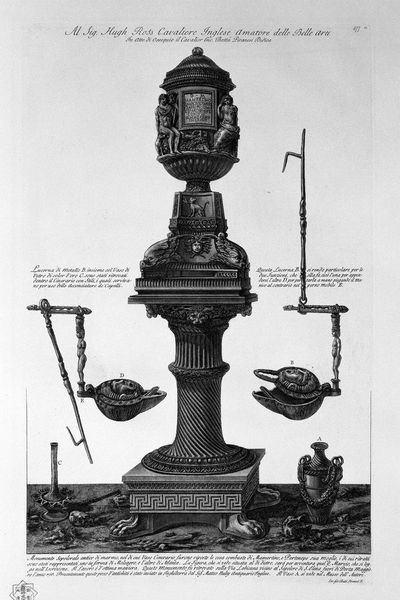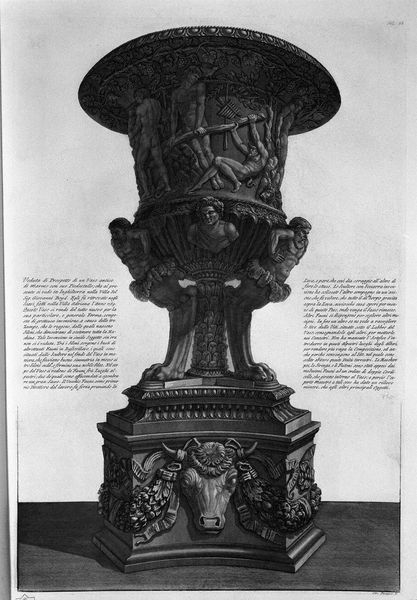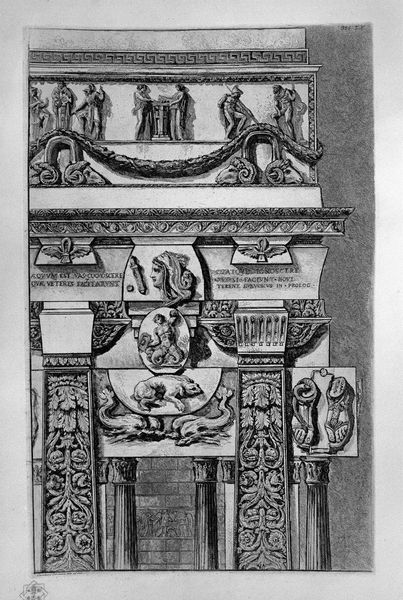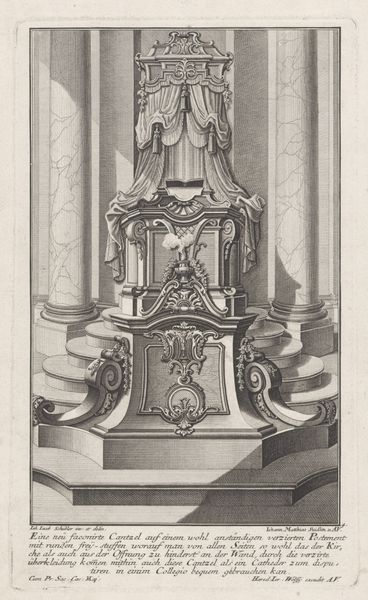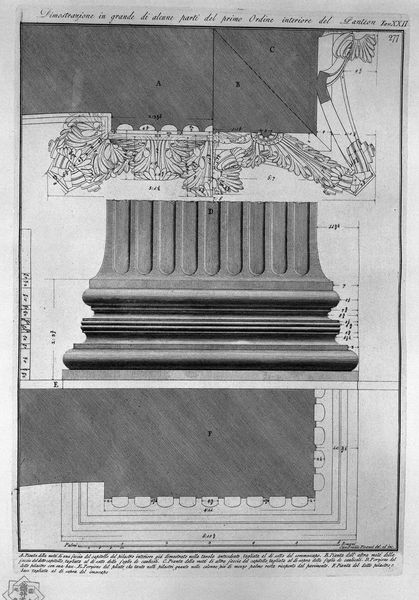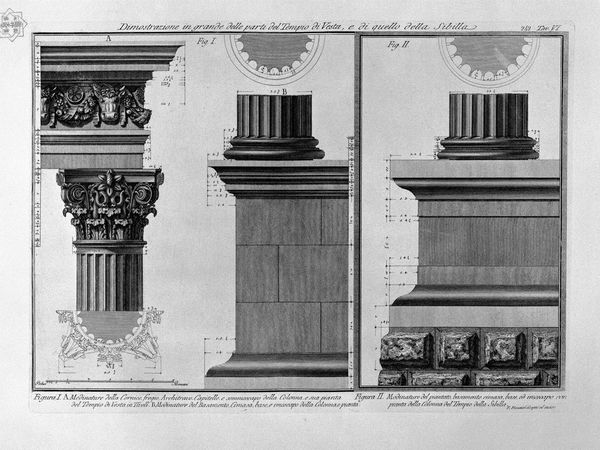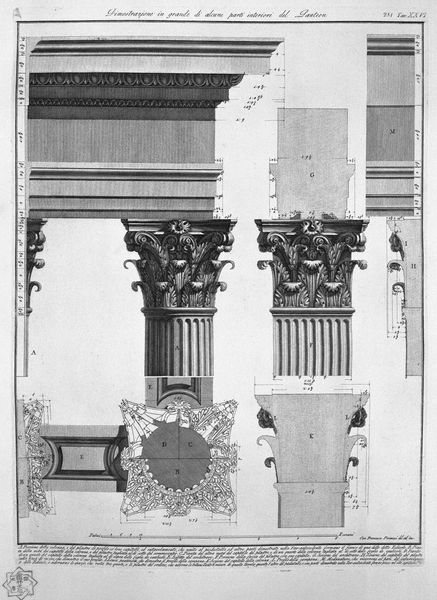
Demonstration in large parts of the first order interior of the Pantheon
0:00
0:00
drawing, print, etching, engraving, architecture
#
drawing
#
neoclacissism
# print
#
etching
#
pencil sketch
#
classical-realism
#
geometric
#
engraving
#
architecture
Copyright: Public domain
Curator: This is an engraving by Giovanni Battista Piranesi entitled "Demonstration in large parts of the first order interior of the Pantheon". Look at the incredible detail he manages to capture in a simple etching. Editor: My immediate impression is one of austerity and precision. It feels almost clinical, a stark contrast to the grandeur the Pantheon evokes. Curator: Indeed. Piranesi, though, often used these almost clinical architectural studies to engage with the symbolism and political dimensions of classical forms. You see these drawings as more than mere documentations? Editor: Absolutely. There is something about this fragmented view, almost like an exploded diagram, that invites deconstruction. The act of dissecting a classical order reveals the power structures inherent within that visual language. Consider how Neoclassicism was mobilized to lend authority to various regimes. Curator: An interesting point. Think of the column itself, historically a phallic symbol representing strength and dominion. Seeing it deconstructed in this print, almost shattered, does make you question the seemingly immutable power it represents. I like how it makes one contemplate the column beyond simple architectural terms. Editor: Exactly. By dissecting and examining the building blocks, he’s allowing us to see it as a construct. And that offers opportunities for contestation and re-imagining of space. This also offers up space to acknowledge that this ideal, while supposedly universal, has only ever represented a select segment of humanity, which carries immense importance. Curator: This approach is further embodied by his decision to include inscriptions. Each inscription serves not merely as a reference but almost as a signature affirming Piranesi's hand. The human element within such rigid architectural standards. Editor: Ultimately, this meticulous documentation subtly subverts the very authority it seems to uphold. In doing so, we question its validity. The aesthetic may celebrate classical form, but the fragmentation speaks to its potential for dismantling the inherent values of power within classicism. Curator: Seeing it in that new light, these dissections encourage a critical engagement with symbols—the potential of even the most ancient forms for transformation. The print feels modern in that way, with this notion of disrupting old cultural models. Editor: Piranesi encourages viewers to resist passively accepting history and the value structures imbued within art history, fostering the need for the re-evaluation of aesthetic ideals for us and future generations. It allows one to confront those hard truths from the past.
Comments
No comments
Be the first to comment and join the conversation on the ultimate creative platform.
